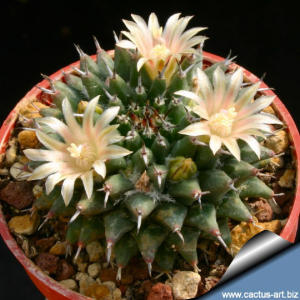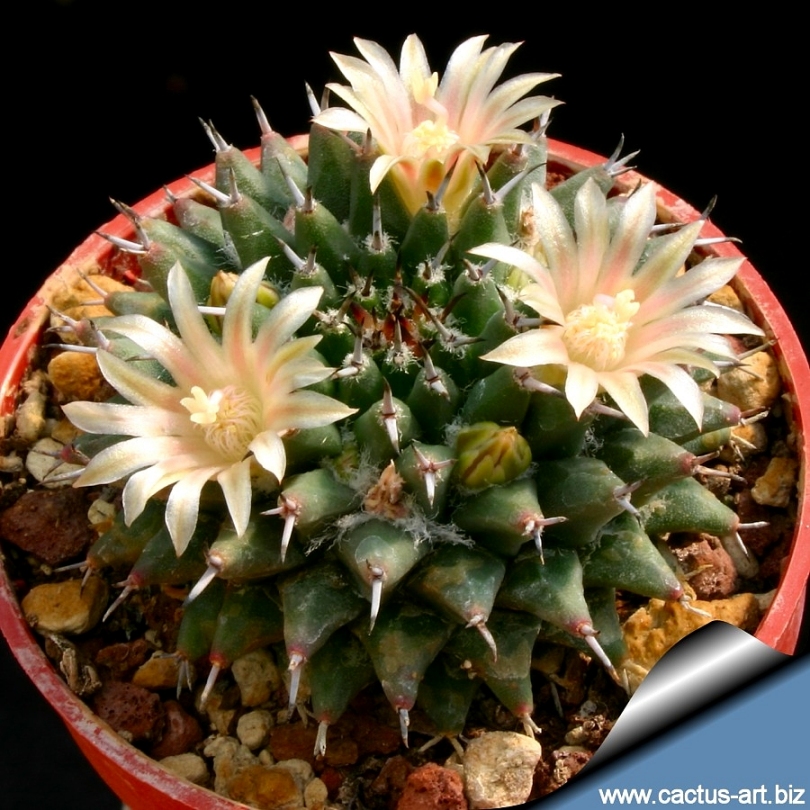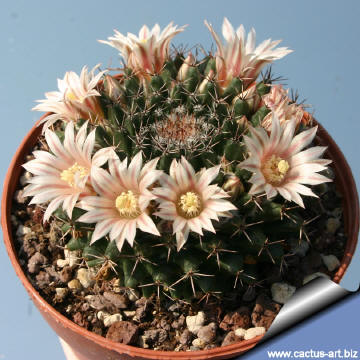-
x
Description
5 years old seedlings grown in 5,5 cm pot. Popular species forming large flattened bodies, the pyramidal tubercles are spirally arranged and forms perfect symmetries. Older specimens produces lots of white wool and are very nice! Family: Cactaceae (Cactus Family) Scientific Name: Mammillaria sempervivi DC. Origin:Central and northern Mexico (Hidalgo, San Luis Potosi, Nuevo Leon, Guanajuato, Queretaro) Conservation status: Listed in CITES appendix 2.
| |
| Description: Solitary at first, or slowly clumping flat with ground. The var. caput-medusae and var. tetracantha; often mentioned in literature and sometimes offered in seed lists, should be fully synonymized with the type variety. | |
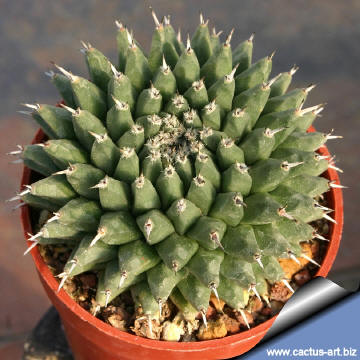 | 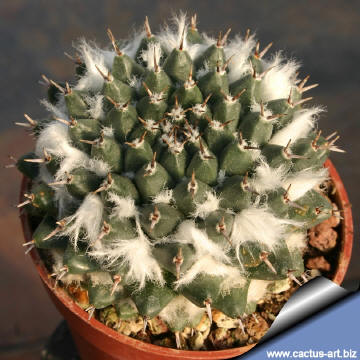 |
| The white wool between the areoles makes this species a pleasure to look at and grow, but the diversity among individual specimens is considerable and the best plants have abundant white axillary wool. Hence, it is worth raising a batch of seedlings and selecting one or two that have the most wool. | |
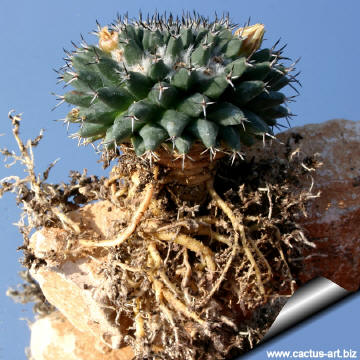 | |
| Cultivation: This is a popular slow growing and easy to cultivate cactus species. Water regularly in summer, but do not overwater (Rot prone) Use pot with good drainage and a very porous potting media, keep dry in winter. Feed with a high potassium fertilizer in summer. It is quite frost resistant if kept dry, hardy as low as -5° C Outside full sun or afternoon shade, inside needs bright light, and some direct sun. | |

